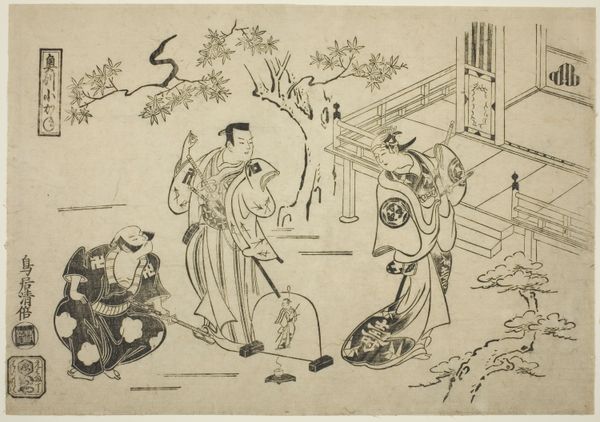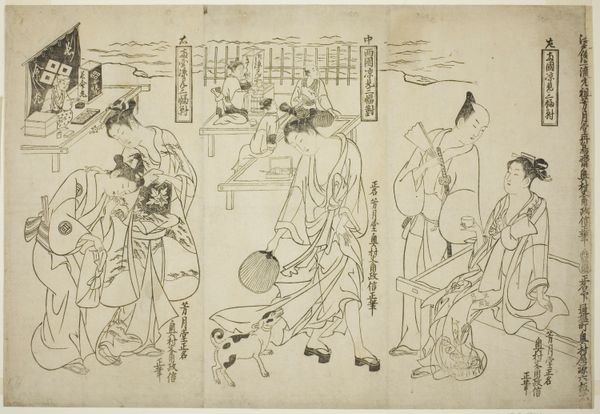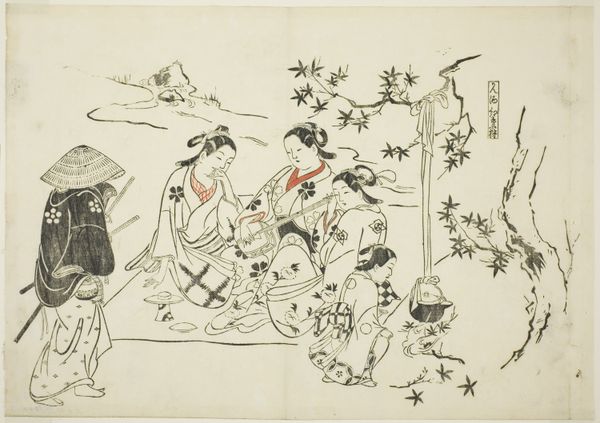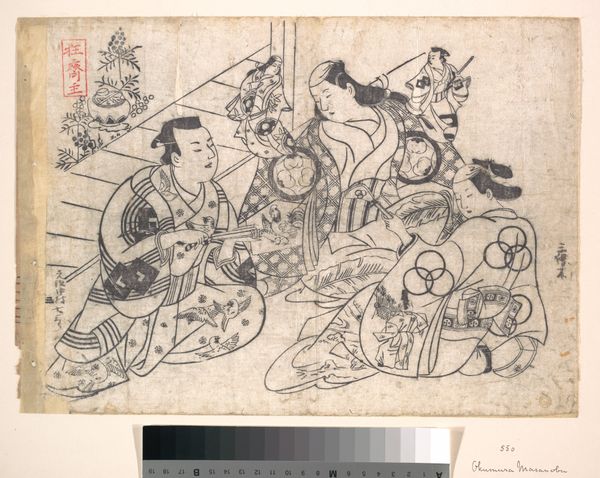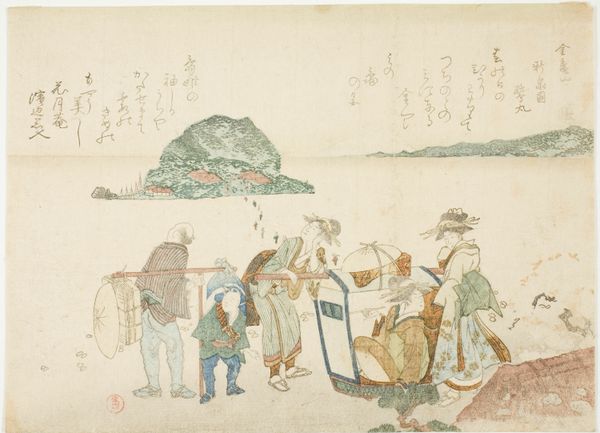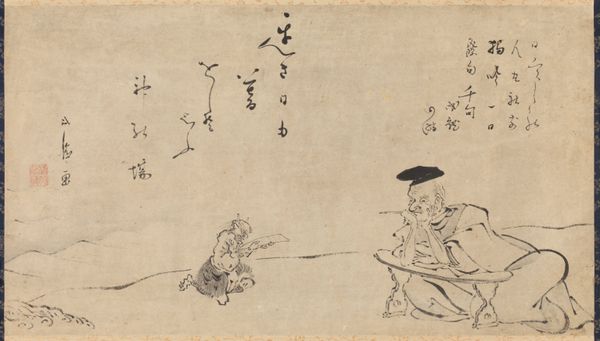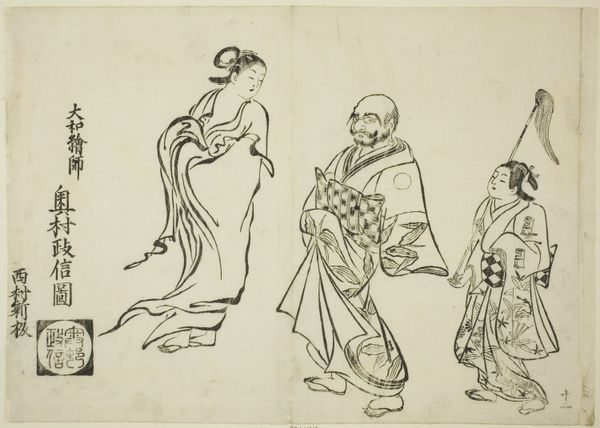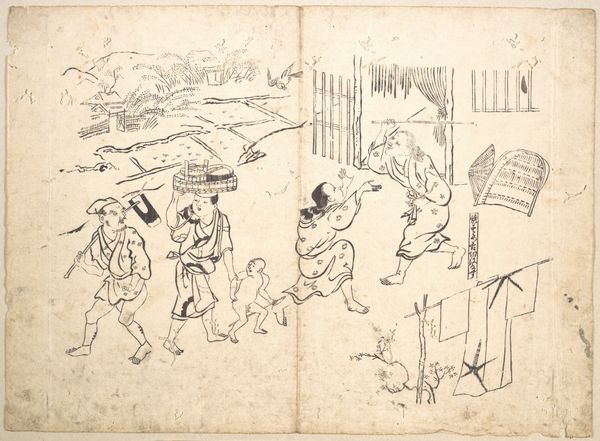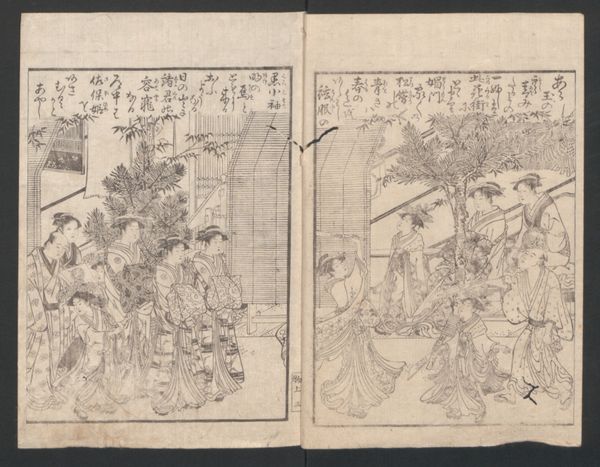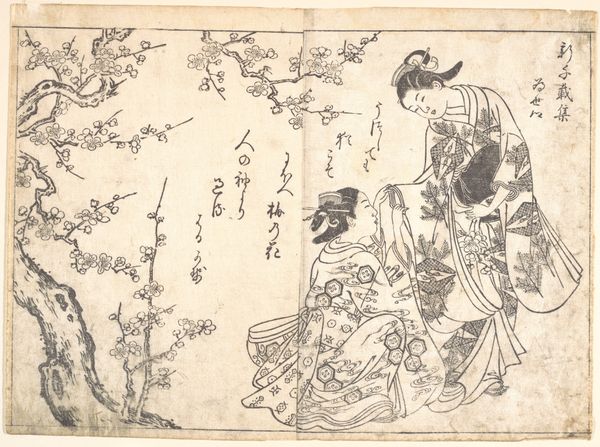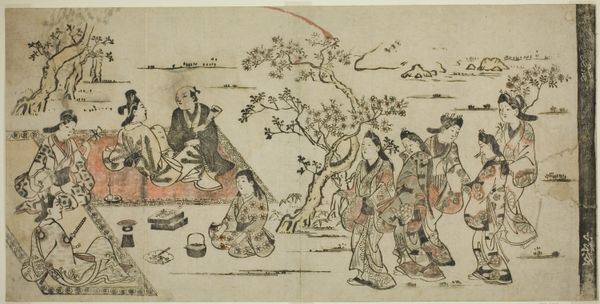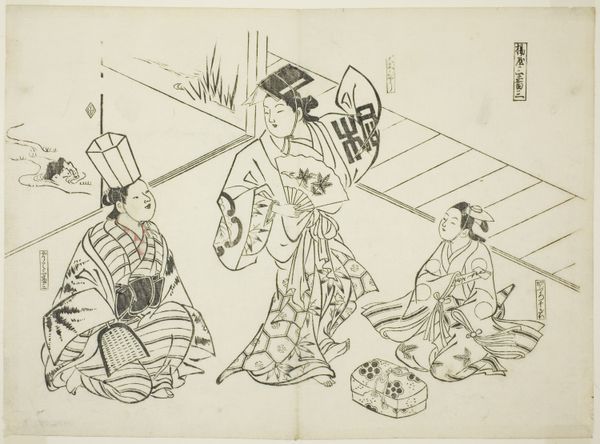
Two Brothers Zhang Xiao and Zhang Li 1834 - 1866
0:00
0:00
print, ink, woodblock-print
#
ink drawing
# print
#
pen sketch
#
asian-art
#
ukiyo-e
#
ink
#
woodblock-print
#
men
#
sword
Dimensions: H. 8 1/2 in. (21.6 cm); W. 13 3/4 in. (34.9 cm)
Copyright: Public Domain
Curator: Here we have Utagawa Kuniyoshi’s woodblock print "Two Brothers Zhang Xiao and Zhang Li", dating from 1834-1866. The work now resides here at the Metropolitan Museum of Art. It is an intriguing ink drawing. Editor: Intricate, with an almost frenetic energy, despite the limited tonal range. I'm immediately struck by the number of figures crammed into the composition; what is their story? Curator: Kuniyoshi depicts a scene of brotherly loyalty from Chinese folklore. The story speaks of two brothers in peril; Zhang Xiao volunteers himself in his sibling's stead after Zhang Li becomes wrongly accused and captured by bandits. It reflects deeply rooted traditions of fraternal and societal obligations prevalent within 19th century Eastern culture. Editor: So, the men brandishing the swords are meant to convey an air of threat? There seems to be much deliberation around whether weapons will be used or not. Is the medium, specifically the woodblock print, adding anything in how the themes are articulated? I'm thinking particularly about its inherent accessibility in distribution. Curator: Yes, most definitely. The act of reproduction allowed these prints to disseminate ethical values—emphasizing morality and self-sacrifice—to a broader audience. It spoke to political conditions and resonated strongly among urban dwellers by advocating ideals like resistance against authority that mirror rebellion. We should not forget that woodblock prints in the Edo period also functioned as "news" about important social phenomena and served as inspiration for various modes of activism against unjust rule. Editor: The details, despite the limited palette, feel quite intentional. See how some figures appear less finished, suggesting variations in material production depending on cost or access; while some figures' adornment like elaborate feathered hats denotes a hierarchical social order at play amid displays courage against adversity Curator: And there is definitely that pervasive sense. Note the visual layering to represent the narrative stages – the captors advancing and other men observing but hesitant as another offers to fill his place; this complexity reflects real conflicts people experienced while trying balancing conformity and free will amid difficult power structures throughout historical epochs. Editor: Viewing art such these types compels appreciation on multiple intellectual levels beyond mere technical skills Curator: I concur – contextual awareness broadens meaningful discussions when evaluating works steeped sociopolitical significance; it transforms observation toward mindful participation engaging both visual artistry alongside moral convictions ingrained culturally .
Comments
No comments
Be the first to comment and join the conversation on the ultimate creative platform.
